My Cart
Your Shopping Cart is currently empty. Use Quick Order or Search to quickly add items to your order!
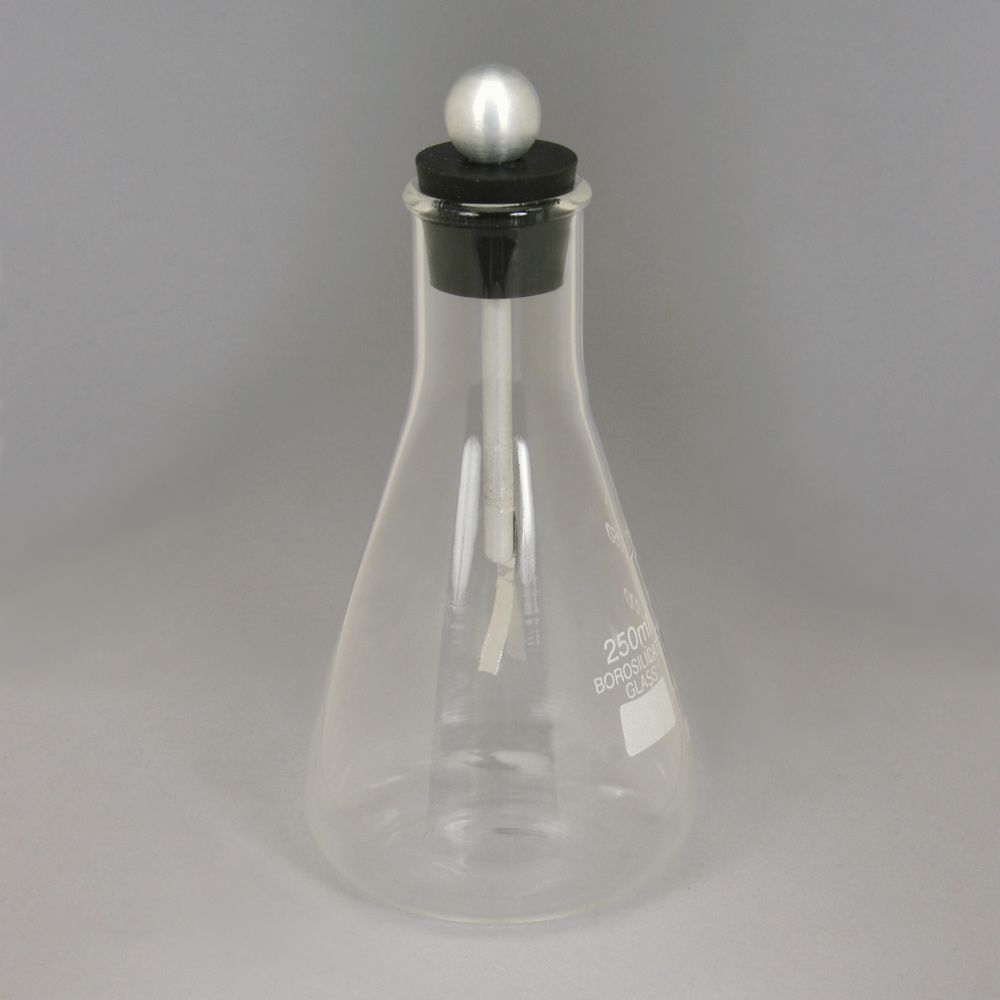 Emmette Cox
Emmette Cox
Product Management Coordinator for Physical Science
The triboelectric series will give you a starting point for finding out what combination of materials provides a good result when trying to produce a static charge. The following sections provide a little more information on how to test for static electricity and how to determine which objects have positive or negative charges.
Students already should be familiar with the following basic information about static electricity.
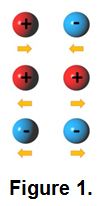
Testing to see if an object is charged is fairly straightforward. In Fig. 2, a negatively charged balloon is brought near a piece of paper. The paper is normally neutral, with the positive and negative charges evenly distributed. However, when the negatively charged balloon is brought near the paper, the balloon repels the electrons in the paper to the far side of the paper, leaving the side near the balloon slightly positive. The attractive force between the negative charges on the balloon and the positive charges on the upper surface of the paper causes the paper to move toward and stick to the balloon.
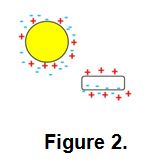
In Fig. 3, a piece of glass with a positive charge is brought near a piece of paper. In this case the electrons are attracted to the glass and move to the top surface of the paper. This phenomenon is called charging by induction.
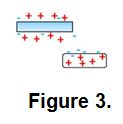
Another useful tool for detecting static charge is an electroscope (Fig. 4). When a negatively charged object is brought near the metal end of the scope (Fig. 5), the negative charges in the metal of the scope travel to the leaves, which both become negatively charged and repel each other. When a positively charged object is brought near the electroscope (Fig. 6), negative charges in the metal of the scope move toward the positive object, causing the leaves to have a positive charge, and the leaves repel each other. The stronger the charge, the greater the separation of the leaves.
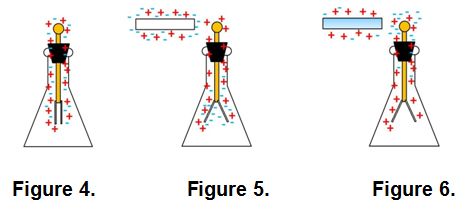
The triboelectric series will help you select materials from your electrostatics kit that generate a strong charge on an object. The electroscope will allow you to detect a charge.
How do you know if an object is positively or negatively charged? Follow these steps:

Now the electroscope will allow you to identify whether an object is positively or negatively charged. If you bring a negative object near the electroscope, the electrons in the scope will be repelled toward the leaves, balancing the charge. The leaves will move toward each other.
If you bring a positive object near the electroscope, it will attract the electrons toward the terminal. The leaves will move away from each other.
You can also use this process with a positive object to charge the electroscope. In this case, grounding the electroscope with your finger will allow extra electrons to move to the electroscope, which will become negatively charged.
Static electricity is an interesting phenomenon, and that's probably all many of us think about it—it's interesting but not very useful. However, we know that without current electricity to power our homes and run our computers and cell phones, our lives would be very different. The electric technologies we rely on every day couldn't have been built without some early scientist taking an interest in static electricity.
Static electricity can be beneficial or damaging. Some smoke stacks use electrostatic devices called scrubbers to help remove particulates from the smoke. Static electricity can damage the circuitry in some electronic devices. Therefore, parts for a computer might be shipped in special packaging to prevent damage from static electricity.
What other uses have scientists found for static electricity? Can you come up with an experiment to develop your own triboelectric series?
These materials may help your investigation of static electricity.